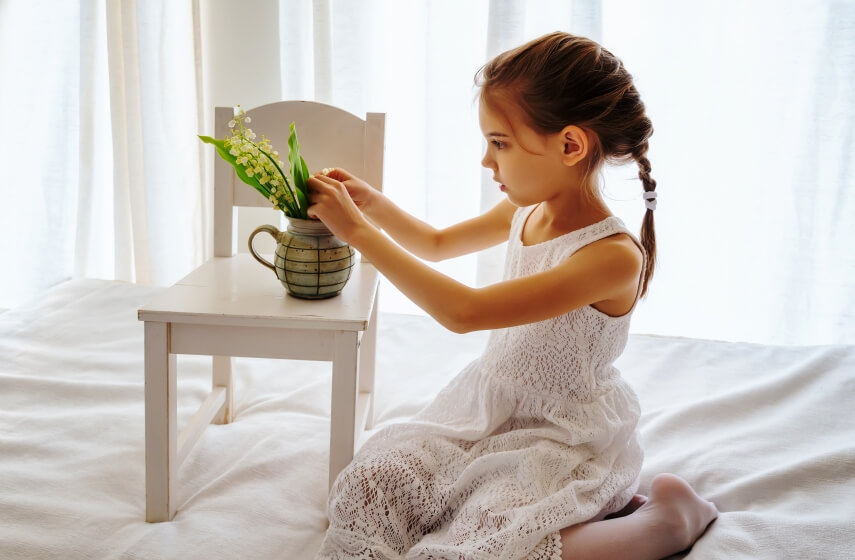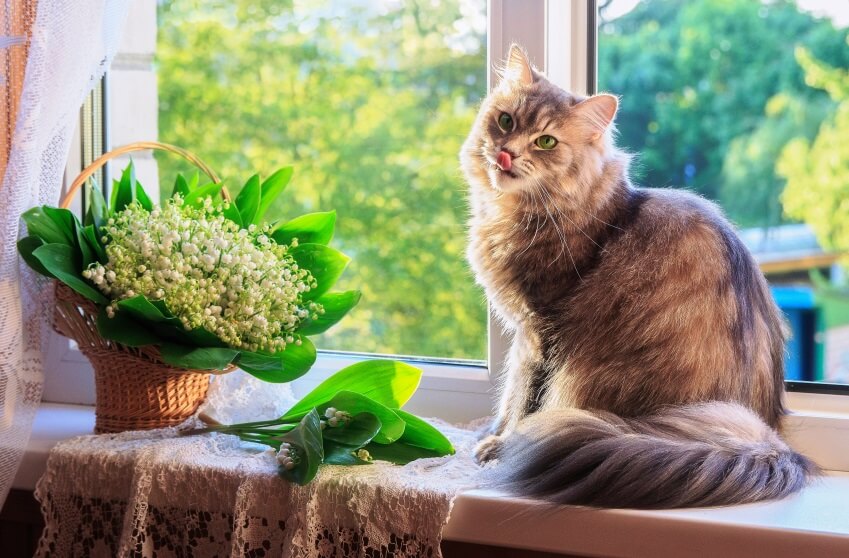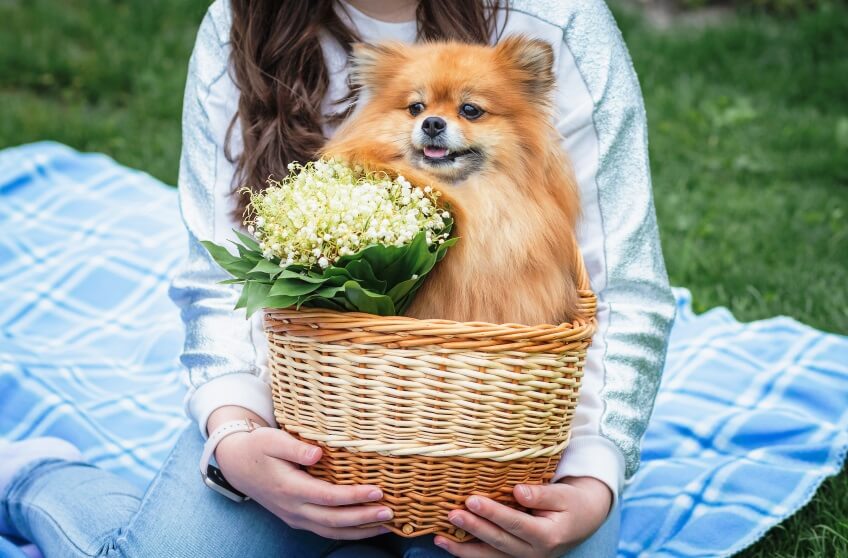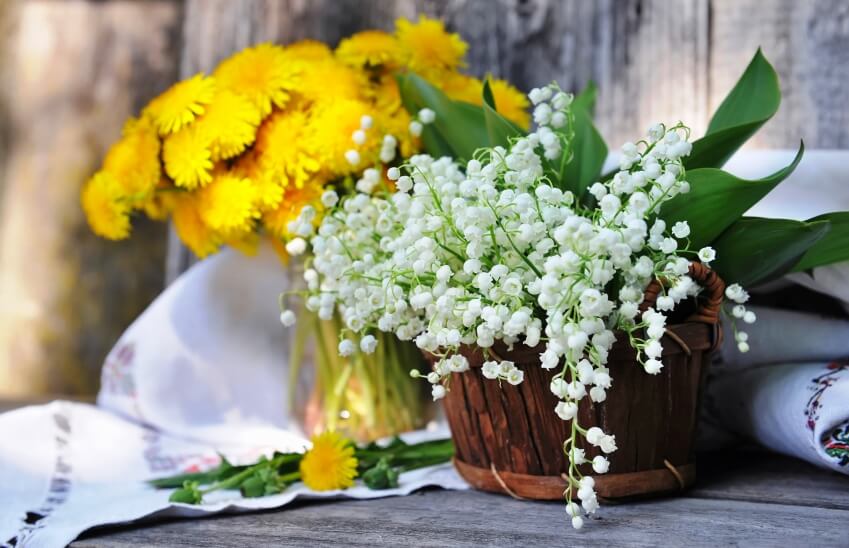Lily of the valley (Convallaria majalis) is a delicate and fragrant flowering plant found in many gardens and natural environments. It is an herbaceous perennial plant native to Europe, Asia, and North America. It features bell-shaped white flowers and broad, pinnate leaves. The plant thrives in partial to full shade and moist soil conditions. However, beneath its charming appearance lies a level of toxicity that demands caution.
While admired by garden enthusiasts for its beauty, it is important to understand whether this plant poses any threat to humans and animals. In this article, we will explore the toxicity of lily of the valley and provide vital information for a safe interaction with this captivating plant [1].
If you are interested in this topic, you can also read
<<Is Pothos Poisonous? >> and <<Is Lantana Poisonous? >> articles.
Is Lily Of The Valley Poisonous To Humans?
Yes, the lily of the valley is poisonous to humans. Despite its charming exterior, the plant contains substances that can be toxic when ingested.
Toxic Components Of Lily Of The Valley
Lily of the Valley contains several toxic components, the most notable being cardiac glycosides. These compounds, including convallatoxin and convallamarin, are concentrated in the plant’s leaves, flowers, and rhizomes. Cardiac glycosides have a direct impact on the cardiovascular system and can be extremely dangerous if consumed in large quantities [2, 3, 4].
Toxicity And Symptoms
Ingestion of any part of the lily of the valley plant can lead to serious health complications. The symptoms of toxicity may vary depending on the amount ingested, the individual’s size, and their overall health. Common symptoms of lily of the valley poisoning may include [5]:
- Gastrointestinal Distress: Nausea, vomiting, and abdominal pain may occur soon after ingestion.
- Cardiac Effects: Cardiac glycosides can disrupt the normal rhythm of the heart, leading to irregular heartbeats, palpitations, and even cardiac arrest.
- Neurological Symptoms: In severe cases, Lily of the Valley poisoning may cause dizziness, confusion, seizures, and loss of consciousness.
Precautions And Safety Measures
Considering the lily of the valley’s toxicity, it is crucial to exercise caution when handling or growing this plant. Here are some safety measures to keep in mind:
- Awareness: Educate yourself and others about the potential hazards associated with the lily of the valley. This is especially important if you have children who may come into contact with the plant.
- Protective Gear: When working with Lily of the Valley, wear gloves to minimize direct skin contact. Ensure that any cuts or open wounds are covered to prevent the absorption of toxins.
- Proper Plant Disposal: If you need to remove or uproot the lily of the valley, take care to prevent accidental ingestion. Wear gloves and dispose of the plant material appropriately, ensuring it is out of reach of children and animals.
- Out of Reach: If you have young children, it is advisable to avoid planting lily of the valley plants altogether or keep them in an inaccessible area.
- Prompt Medical Attention: In the event of ingestion or exposure to lily of the valley, seek immediate medical assistance. Contact a poison control center for guidance and inform them about the situation.
Is Lily Of The Valley Poisonous To Cats?
Yes, the lily of the valley is poisonous to cats. It is crucial to ensure that your furry friend is safe from any potential hazards within your home or garden. Lily of the valley, with its delicate white flowers and sweet fragrance, is a common plant found in many gardens. However, if you have cats, you may be wondering whether this beloved plant poses any danger to them. The poisonousness of lily of the valley to cats and how to keep your feline companion safe is discussed here.
Cardiac glycosides, including convallatoxin and convallarin, can be highly toxic to cats. When ingested, these compounds affect the heart and lead to symptoms such as irregular heartbeat, drooling, nausea, vomiting, lowered blood pressure, and even seizures in severe cases [6].
The Dangers For Cats
If your cat comes into contact with lily of the valley and ingests any part of the plant, they are at risk of experiencing toxic effects. Common routes of exposure include chewing on leaves, flowers, or stems or even simply drinking water contaminated with the plant’s sap. Due to their curious nature, cats may be attracted to plants and explore them with their mouths, making it essential to be cautious about the presence of lily of the valley plants in your surroundings.
Preventing Exposure
To protect your beloved feline companion from the potential dangers of lily of the valley, it is recommended to take the following precautions:
- Avoid planting lily of the valley in areas accessible to your cats, such as your garden or indoor potted plants.
- If you have lily of the valley on your property, consider removing it entirely or placing it in areas that your cat cannot reach.
- If you notice lily of the valley growing in public spaces where your cat could potentially come into contact with it, you should avoid those areas during walks or outdoor playtime.
- Educate yourself about other potentially toxic plants to keep your cat safe from any accidental ingestion.
What to Do If Your Cat Is Exposed
If you suspect that your cat has been exposed to lily of the valley or is displaying any concerning symptoms, it is vital to seek immediate veterinary assistance. Professional guidance will be necessary to assess the severity of potential toxicity and provide the appropriate treatment.
Is Lily Of The Valley Poisonous To Dogs?
Yes, the lily of the valley is poisonous to dogs. While it adds a touch of beauty to gardens, households, and floral arrangements, exposure to this plant can pose a risk to dogs. Here, we provide the information you need to keep your four-legged companions safe.
Cardiac glycosides, particularly convallatoxin and convallamarin, can significantly impact a dog’s health if ingested. Dogs are particularly susceptible to the toxicity of lily of the valley due to their small size and inability to metabolize these chemicals efficiently [7, 8].
Signs Of Toxicity
If a dog ingests any part of the lily of the valley plant, it is crucial to watch out for the following signs of toxicity:
- Gastrointestinal Upset: Vomiting, diarrhea, and loss of appetite may occur.
- Disorientation: Dogs may appear dizzy, lethargic, or unbalanced, often accompanied by increased salivation.
- Irregular Heartbeat: One of the main concerns is cardiac toxicity, resulting in abnormal heart rhythms, increased heart rate, or cardiac arrest in severe cases.
- Dilated Pupils: The dog’s pupils may become visibly dilated.
- Seizures: Convulsions or seizures may occur in extreme cases.
Immediate Actions
If you suspect your dog has ingested lily of the valley or is displaying any of the symptoms mentioned above, it is vital to seek emergency veterinary care immediately. Remember to inform the veterinarian about your concerns and any possible exposure to lily of the valley.
Prevention and Safety Measures
The best approach is to prevent access to lily of the valley to protect your dog from potential toxicity. Consider the following precautions:
- Identify and remove lily of the valley plants from your home, garden, or any areas your dog frequents.
- Educate yourself and your family members on the potential dangers of lily of the valley to avoid accidental exposure.
- If you receive floral arrangements, ensure that they do not contain lily of the valley before bringing them into your home.
- Supervise your dog during walks and outdoor activities to prevent them from sniffing or nibbling on unknown plants.
Conclusion
While the lily of the valley serves as an enchanting addition to gardens, it is vital to recognize its potential toxicity to humans and animals alike. Individuals can ensure a safe interaction with this captivating plant by taking necessary precautions and seeking prompt medical assistance when needed. Remember, knowledge and prevention are key in mitigating the risks associated with lily of the valley.












